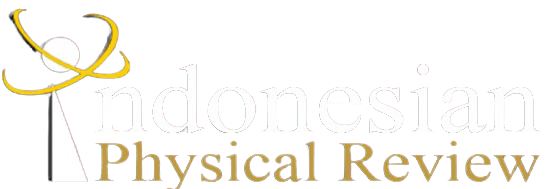WATER LEVEL MONITORING SYSTEM IN WATER UTILITY COMPANY OPEN CHANNELS BASED ON INTERNET OF THINGS
DOI:
10.29303/ipr.v5i3.155Downloads
Abstract
Monitoring the water level in the open channels of the regional water utility company needs to be carried out to ensure the availability of raw water to be processed. This research focuses on making a prototype of a water level monitoring system in an open channel utilizing the WSN (Wireless Sensor Network) component as an application of the IoT (Internet of Things) concept. Monitoring the water level in the open channel is carried out using the infrared sensor GP2Y0A02KF0Y. The real-time measurement results are then sent using XBee wireless communication, then processed by the Raspberry Pi to be saved to a database and displayed on the website. The measurement data can be presented on the website in graphs and tables. The GP2Y0A02YK0F sensor has a measurement error of 1.02% with a correlation coefficient of 0.9998. The average delay in sending data to the website is 1 second. The monitoring system can work well when measuring the water level in an open channel. The advantages of this research are that the instrument used has a high level of accuracy at an affordable price, uses low power, is easy to operate, and can store and present real-time data
Keywords:
Iot WSN Water Level Raspberry PiReferences
P. T. Traya Tirta Makassar. (2021). Raw Water Source at Panaikang Water Treatment Plant (in Indonesian). Available online from: http://trayatirtamakassar.com/ipa-panaikang/sumber-air-baku/. [Accessed August 2, 2021].
A. A. Latif, M. S. Palli, F. Maricar, & M. P. Hatta. (2019). Effect of Sluice Gate Opening Height on Froude Number with Clay Base in Open Channel (in Indonesian). Prosiding Seminar nasional Teknik Sipil 2019, 181-186. Doi: http://hdl.handle.net/11617/10853.
S. Permana, A. Susetyaningsih, & D. M. Fadli. (2022). Clean Water Supply in Tasikmalaya Municipality, Opportunities and Challenges. Journal of Geoscience, Engineering, Environment, and Technology, 7(1), 1–6. Doi: https://doi.org/10.25299/jgeet.2022.7.1.7293.
X. Zhang, N. Wang, Z. Xie, X. Ma, & A. Huete. (2018). Water Loss Due to Increasing Planted Vegetation Over the Badain Jaran Desert, China. Remote Sensing, 10(1), 1–21. Doi: https://doi.org/10.3390/rs10010134.
A. Ravichandra, K. Kirtivasan, A. Mahesh, & A. S. Savanth. (2017). Non-Contact Digital Music Instrument Using Light Sensing Technology. International Journal of Electronics and Communication Engineering, 11(10), 1024–1028. Doi: https://waset.org/Publication/10008025.
U. Papa, G. Del Core, G. Giordano, & S. Ponte. (2017). Obstacle Detection and Ranging Sensor Integration for a Small Unmanned Aircraft System. 4th IEEE International Workshop on Metrology for AeroSpace, MetroAeroSpace 2017 - Proceedings, 571–577. Doi: https://doi.org/10.1109/MetroAeroSpace.2017.7999533.
S. A. H. AlMetwally, M. K. Hassan, & M. H. Mourad. (2020). Real Time Internet of Things (IoT) Based Water Quality Management System. Procedia CIRP, 91, 478–485. Doi: https://doi.org/10.1016/j.procir.2020.03.107.
W. Li & S. Kara. (2017). Methodology for Monitoring Manufacturing Environment by Using Wireless Sensor Network (WSN) and the Internet of Things (IoT). Procedia CIRP, 61, 323-328. Doi: https://dx.doi.org/10.1016/j.procir.2016.11.182.
I. Laila, A. Arifin, & B. Armynah. (2022). Internet of Medical Things (IoMT)-Based Heart Rate and Body Temperature Monitoring System. Indonesian Physical Review, 5(1), 1–14. Doi: https://doi.org/10.2930 3/ipr.v5i1.134.
C. Flores-Cortés, R. Buenrostro-Mariscal, A. Guerrero-Ibañez, F. Estrada-Gonzalez, & J. Sandoval. (2017). Performance Evaluation of an IEEE 802.15.4 Wireless Sensor Network on a Coastal Environment. International Journal of Interactive Mobile Technologies, 11(1), 98–115. Doi: https://doi.org/10.3991/ijim.v11i1.6315.
S. Dswilan, Harmadi, & Marzuki. (2021). Flood Monitoring System Using Ultrasonic Sensor SN-SR04T and SIM 900A. Journal of Physics: Conference Series, 1876(1), 1-8. Doi: https://doi.org/10.1088/1742-6596/1876/1/012003.
S. I. Abdullahi, M. H. Habaebi, T. S. Gunawan, & M. D. R. Islam. (2017). Miniaturized Water Flow and Level Monitoring System for Flood Disaster Early Warning. IOP Conference Series: Materials Science and Engineering, 260(1), 1–10. Doi: https://doi.org/10.1088/1757-899X/260/1/012019.
T. H. Nasution, E. C. Siagian, K. Tanjung, & Soeharwinto. (2018). Design of river height and speed monitoring system by using Arduino. IOP Conference Series: Materials Science and Engineering, 308(1), 1–7. Doi: https://doi.org/10.1088/1757-899X/308/1/012031.
H. A. Robhani, & A. Ro’uf. (2018). Ultrasonic Flow Meter Design for Measuring Water Flow in Pipes (in Indonesian). IJEIS (Indonesian Journal of Electronics and Instrumentation Systems), 8(1), 83–94. Doi: https://doi.org/10.22146/ijeis.31774.
B. Zielinski. (2021). A Comparison of Proximity Sensors for a Bicycle-To-Car Distance Rangefinder. International Journal of Electronics and Telecommunications, 67(2), 277–282. Doi: https://doi.org/10.24425/ijet.2021.135976.
A. Hasanah, S. A. Saptari, & D. Lestari. (2020). Flood Detection System and Automatic Sluice Using Website-Based Raspberry Pi 3 (in Indonesian). InfoTekJar: Jurnal Nasional Informatika dan Teknologi Jaringan, 4(2), 250–254. Doi: https://jurnal.uisu.ac.id/index.php/infotekjar/article/view/2286.
License

This work is licensed under a Creative Commons Attribution-NonCommercial-ShareAlike 4.0 International License.
Authors who publish with Indonesian Physical Review Journal, agree to the following terms:
- Authors retain copyright and grant the journal right of first publication with the work simultaneously licensed under a Creative Commons Attribution-ShareAlike 4.0 International Licence (CC BY SA-4.0). This license allows authors to use all articles, data sets, graphics, and appendices in data mining applications, search engines, web sites, blogs, and other platforms by providing an appropriate reference. The journal allows the author(s) to hold the copyright without restrictions and will retain publishing rights without restrictions.
- Authors are able to enter into separate, additional contractual arrangements for the non-exclusive distribution of the journal's published version of the work (e.g., post it to an institutional repository or publish it in a book), with an acknowledgment of its initial publication in Indonesian Physical Review Journal.
- Authors are permitted and encouraged to post their work online (e.g., in institutional repositories or on their website) prior to and during the submission process, as it can lead to productive exchanges, as well as earlier and greater citation of published work (See The Effect of Open Access).





